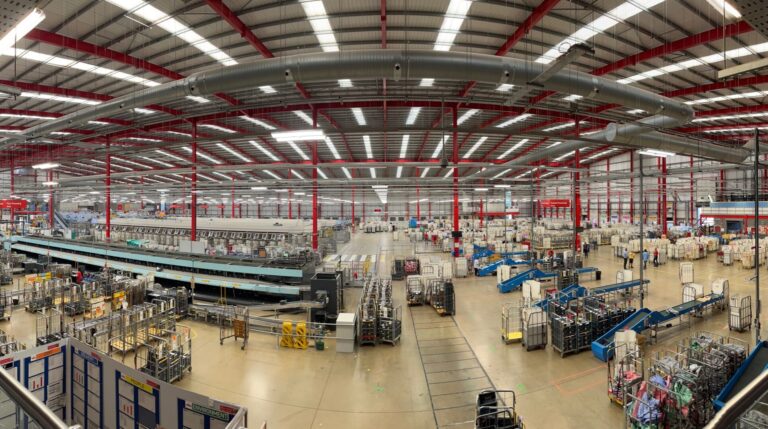Royal Mail has announced over 300 green upgrades to heating, lighting and water systems at more than 1,200 operational sites and offices across the UK as part of its net zero by 2040 strategy.
According to the company, the upgrades will help it save 3,500 tons of CO2e a year, on top of the reduction in emissions already being realized across the fleet and supply chain.
The new investments include a range of energy-saving solutions such as motion sensor lighting, centrally controlled heating and water efficiency systems to reduce waste, as well as Royal Mail’s first gas-free heating methods. Beyond the environmental benefits, the operator expects to see significant returns on investment by reducing utility bills.
Stuart Hookins, Royal Mail director of property and facilities solutions, commented, “Our property estate is one of the largest in the country and it plays an important role in helping us meet our goal of being net zero by 2040. Effective energy management, new building technologies and investment in our portfolio and assets are key to unlocking the improvements we need to achieve our objectives.”
Decarbonizing heating
Over the next year, several sites will move to gas-free heating, such as air source heat pumps and heat networks. This is the early stage of Royal Mail’s longer-term strategy to significantly reduce the use of gas across the estate to meet its sustainability goals.
In the shorter term, as options for zero-carbon heating solutions develop, Royal Mail will upgrade existing boilers to new, more efficient versions while continuing to establish the most suitable long-term options for the estate.
Energy-saving technologies
As part of the upgrades, almost 100 sites will be programmed for complete LED upgrades, including the addition of motion sensors. This will lower the electricity demand at the sites to reduce environmental impact and enable the sites’ grid capacity to be used for electric vehicle charging or electric heating solutions in the future.
More than 120 sites will have their heating systems upgraded so they can be controlled centrally by a new building energy management system (BEMS) being installed, ensuring heating is not excessive and can be programmed to only be on when needed.
Up to 80 sites will receive water efficiency improvements such as urinal controls, which are expected to save a significant amount of water per year.


